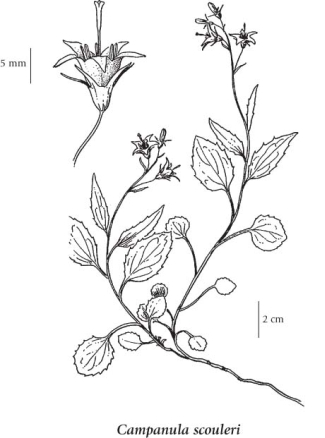E-Flora BC: Electronic Atlas of the Flora of British Columbia
Campanula scouleri Hook. ex A. DC.
Scouler's harebell (pale bellflower) Campanulaceae (Bellflower family) Introduction to Vascular Plants
|
|||||||||||||||||||||||||||||||||||||||||||||||||||||||||||
